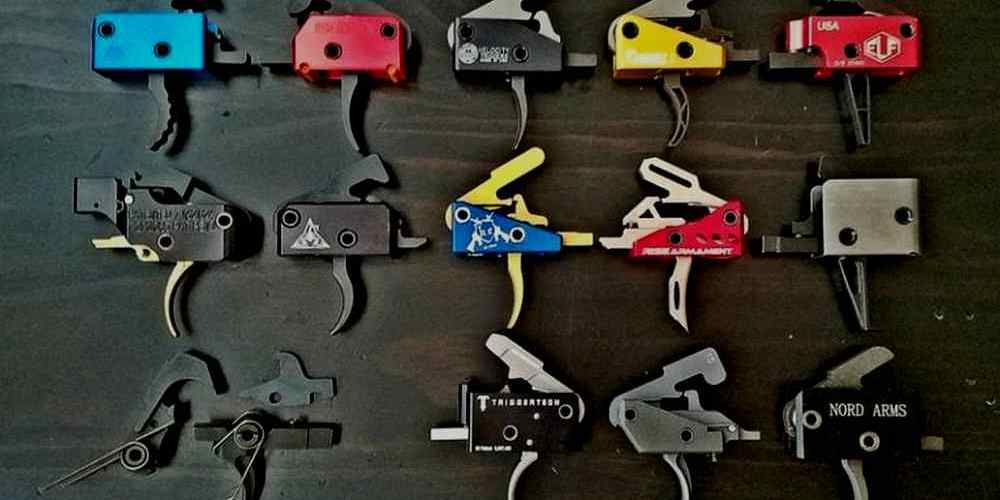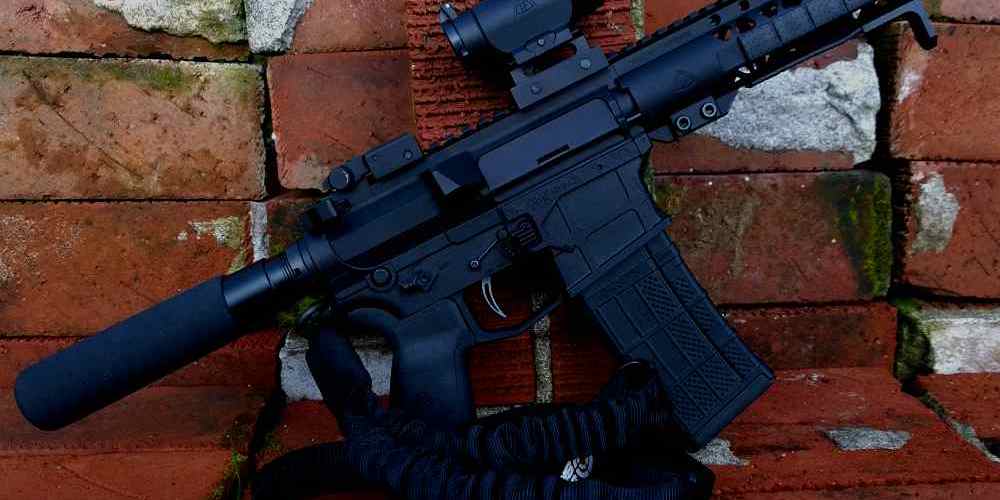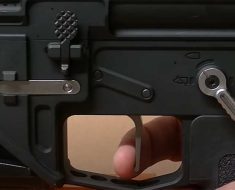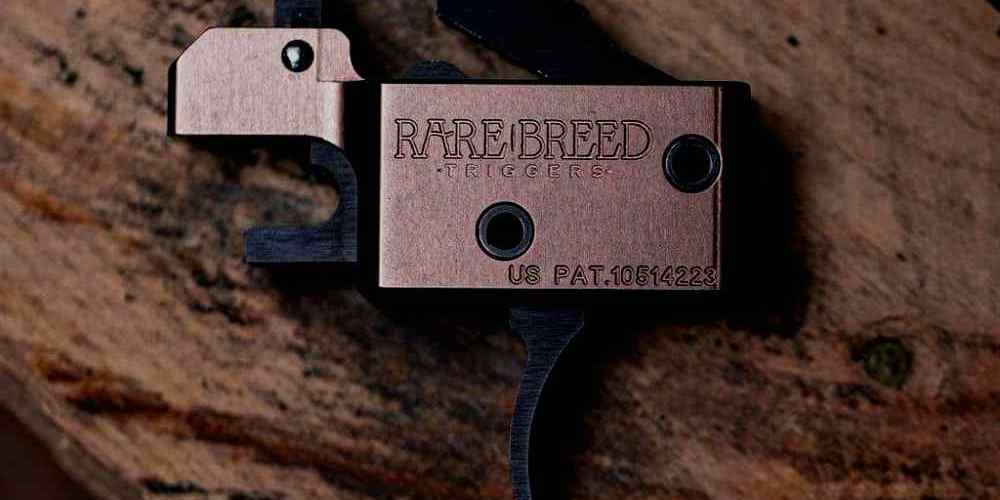Enhancing your shooting experience with precision and speed.
Pros and Cons of Binary Triggers for AR15s
Binary triggers for AR15s have been a topic of debate among gun enthusiasts and experts alike. Some see them as a revolutionary innovation that enhances the shooting experience, while others view them as nothing more than a gimmick. In this article, we will explore the pros and cons of binary triggers for AR15s to help you make an informed decision on whether or not to invest in one for your firearm.
Let’s start with the pros of binary triggers. One of the main advantages of binary triggers is their ability to increase the rate of fire of your AR15. With a binary trigger installed, you can fire a round both when you pull the trigger and when you release it, effectively doubling the rate of fire compared to a standard trigger. This can be particularly useful in situations where rapid and accurate shooting is required, such as in competitive shooting or self-defense scenarios.
Another benefit of binary triggers is their versatility. Many binary triggers come with a selector switch that allows you to switch between binary mode and semi-automatic mode. This means that you can enjoy the increased rate of fire of a binary trigger when you need it, but also have the option to switch back to semi-automatic mode for more controlled shooting. This versatility can make binary triggers a valuable addition to your AR15 arsenal.
In addition to their increased rate of fire and versatility, binary triggers can also be a lot of fun to shoot. The unique firing mechanism of binary triggers can provide a thrilling shooting experience that is sure to keep you entertained at the range. Whether you are a seasoned shooter or a beginner, using a binary trigger can add an element of excitement to your shooting sessions.
However, binary triggers are not without their drawbacks. One of the main concerns with binary triggers is their potential impact on accuracy. The increased rate of fire of a binary trigger can make it more difficult to maintain control over your shots, leading to decreased accuracy. This can be a significant drawback for shooters who prioritize precision and consistency in their shooting.
Another downside of binary triggers is their cost. Binary triggers can be more expensive than traditional triggers, which may deter some shooters from investing in them. Additionally, binary triggers may require additional training and practice to master, which can be a time-consuming process for some shooters.
In conclusion, binary triggers for AR15s offer a range of benefits, including increased rate of fire, versatility, and a fun shooting experience. However, they also come with drawbacks such as decreased accuracy and higher cost. Ultimately, whether or not to invest in a binary trigger for your AR15 will depend on your individual shooting preferences and priorities. If you value increased rate of fire and versatility, a binary trigger may be worth considering. However, if accuracy and cost are more important to you, you may want to stick with a traditional trigger.
Legal Implications of Using Binary Triggers
Binary triggers for AR15s have been a topic of debate among gun enthusiasts and lawmakers alike. These triggers allow for a firearm to shoot one round when the trigger is pulled and another round when it is released. This rapid-fire capability has raised concerns about the legality and safety of using binary triggers in firearms.
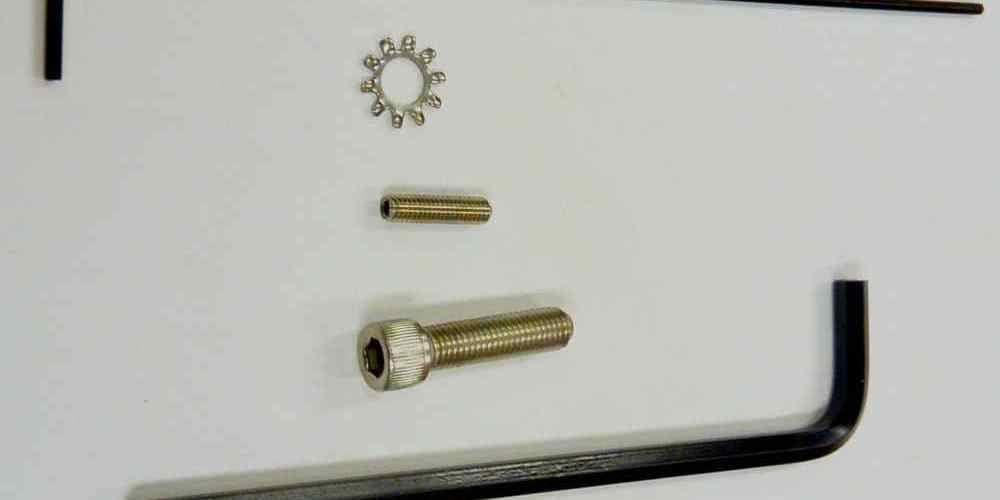
From a legal standpoint, the use of binary triggers in AR15s falls into a gray area. While the National Firearms Act (NFA) regulates fully automatic weapons, binary triggers are technically not classified as such. This has led to confusion among gun owners and law enforcement agencies about the legality of these triggers.
One of the main concerns with binary triggers is their potential to be classified as machine guns under the NFA. This would require gun owners to register their firearms with the Bureau of Alcohol, Tobacco, Firearms and Explosives (ATF) and pay a $200 tax stamp. Failure to do so could result in criminal charges and confiscation of the firearm.
Another legal issue with binary triggers is their classification as “bump stocks” under the ATF’s regulations. In 2018, the ATF reclassified bump stocks as machine guns, effectively banning their sale and possession. This has raised questions about whether binary triggers could face a similar fate in the future.
Despite these legal concerns, some gun owners argue that binary triggers are a legitimate innovation that enhances the shooting experience. They point to the increased rate of fire and improved accuracy that binary triggers provide. However, critics argue that these benefits come at the cost of safety and responsible gun ownership.
In response to these concerns, some states have taken action to regulate the use of binary triggers. California, for example, has banned the sale and possession of binary triggers, citing public safety concerns. Other states have introduced legislation to restrict the use of these triggers or require additional background checks for their purchase.
In addition to state regulations, the ATF has issued guidance on the use of binary triggers. In a letter to a manufacturer, the ATF stated that binary triggers are not considered machine guns under the NFA. However, the agency also warned that any modifications to a binary trigger that increase its rate of fire could result in it being classified as a machine gun.
Overall, the legal implications of using binary triggers in AR15s are complex and evolving. Gun owners must be aware of the regulations in their state and consult with legal experts before purchasing or using a binary trigger. While these triggers offer a unique shooting experience, they also come with potential legal risks that could have serious consequences.
In conclusion, the debate over binary triggers for AR15s is far from over. As technology continues to advance, lawmakers and gun owners will need to navigate the legal implications of these triggers to ensure the safety and responsible use of firearms. Whether binary triggers are seen as an innovation or a gimmick ultimately depends on how they are regulated and used in the future.
Comparison of Binary Triggers with Traditional Trigger Systems
Binary triggers for AR15s have been gaining popularity in recent years, with some gun enthusiasts hailing them as a revolutionary innovation while others dismiss them as nothing more than a gimmick. In this article, we will compare binary triggers with traditional trigger systems to help you decide whether they are worth the investment.
First and foremost, let’s discuss what a binary trigger actually is. A binary trigger is a type of trigger system that allows a shooter to fire a round both when the trigger is pulled and released. This means that with a binary trigger, you can fire two rounds with a single pull of the trigger. In contrast, traditional trigger systems only allow for one round to be fired per trigger pull.
One of the main advantages of binary triggers is their increased rate of fire. With a binary trigger, you can fire rounds at a much faster rate than with a traditional trigger system. This can be particularly useful in situations where rapid fire is necessary, such as in competitive shooting or self-defense scenarios.
However, this increased rate of fire also comes with some drawbacks. Binary triggers can be more difficult to control than traditional trigger systems, as the shooter must be mindful of both the pull and release of the trigger. This can lead to decreased accuracy and precision, especially for inexperienced shooters.
Another factor to consider when comparing binary triggers with traditional trigger systems is their legality. Binary triggers are legal in most states, but there are some restrictions in place. For example, some states have banned binary triggers outright, while others require a special permit to own one. It is important to familiarize yourself with the laws in your state before purchasing a binary trigger.
In terms of cost, binary triggers are typically more expensive than traditional trigger systems. This is due to the complex design and technology required to create a binary trigger. While some shooters may be willing to pay the extra cost for the increased rate of fire, others may find it difficult to justify the expense.
Ultimately, whether a binary trigger is worth the investment comes down to personal preference and intended use. If you are a competitive shooter looking to gain an edge over your opponents, a binary trigger may be a worthwhile investment. However, if you are a casual shooter who values accuracy and precision above all else, a traditional trigger system may be more suitable for your needs.
In conclusion, binary triggers for AR15s can be a valuable tool for some shooters, but they are not without their drawbacks. Before purchasing a binary trigger, it is important to consider factors such as rate of fire, control, legality, and cost. By weighing these factors carefully, you can determine whether a binary trigger is the right choice for you.
User Experiences with Binary Triggers
Binary triggers for AR15s have been a topic of much debate among gun enthusiasts. Some see them as a revolutionary innovation that enhances the shooting experience, while others dismiss them as nothing more than a gimmick. To get a better understanding of how binary triggers are perceived by users, we spoke to several individuals who have had firsthand experience with these devices.
One user we spoke to, John, has been using a binary trigger in his AR15 for over a year now. He described the experience as “game-changing.” According to John, the binary trigger allows him to shoot faster and more accurately than ever before. He explained that the ability to fire a round both when the trigger is pulled and released has significantly improved his shooting speed without sacrificing accuracy.
Another user, Sarah, had a different perspective on binary triggers. She found that while the increased rate of fire was fun at first, she quickly grew tired of it. Sarah explained that the novelty wore off quickly, and she ultimately found herself using her AR15 less frequently because of it. She also noted that the binary trigger made it more difficult for her to control her shots, leading to decreased accuracy.
Despite the mixed reviews, one thing that all users we spoke to agreed on was the importance of proper training and practice when using a binary trigger. Mark, another user we interviewed, emphasized the need for responsible gun ownership and stressed the importance of understanding how to safely and effectively use a binary trigger before incorporating it into regular shooting practice.
Transitioning from user experiences to the technical aspects of binary triggers, it’s important to note that these devices are not without their drawbacks. One common concern among users is the potential for accidental discharges. Because binary triggers allow for a round to be fired both when the trigger is pulled and released, there is an increased risk of unintentional firing if the shooter is not careful.
Additionally, binary triggers can be more difficult to control than traditional triggers, especially for inexperienced shooters. The increased rate of fire can make it challenging to maintain accuracy, and users may find themselves struggling to keep their shots on target.
Despite these challenges, many users find that with proper training and practice, binary triggers can be a valuable addition to their AR15s. The key is to approach them with caution and respect for their capabilities. By understanding how binary triggers work and taking the time to master their use, shooters can enjoy the benefits of increased speed and performance without compromising safety or accuracy.
In conclusion, user experiences with binary triggers for AR15s are varied, with some finding them to be a valuable tool for enhancing their shooting experience, while others see them as little more than a gimmick. The key to making the most of a binary trigger is to approach it with caution, respect, and a commitment to proper training and practice. With the right mindset and approach, shooters can unlock the full potential of binary triggers and enjoy the benefits they have to offer.
Future Trends in Binary Trigger Technology
Binary triggers for AR15s have been a hot topic of discussion among gun enthusiasts and experts alike. Some see them as a revolutionary innovation that enhances the shooting experience, while others dismiss them as nothing more than a gimmick. In this article, we will explore the world of binary triggers for AR15s and delve into whether they truly represent the future of trigger technology or are just a passing fad.
First and foremost, it is important to understand what a binary trigger is and how it differs from a traditional trigger. A binary trigger allows a shooter to fire a round both when the trigger is pulled and released, effectively doubling the rate of fire compared to a standard semi-automatic trigger. This unique feature has garnered both praise and criticism from gun owners and experts.
Proponents of binary triggers argue that they offer increased shooting speed and improved accuracy, making them ideal for competitive shooting and tactical applications. By allowing for rapid follow-up shots, binary triggers can give shooters a significant advantage in fast-paced scenarios where split-second decisions can make all the difference. Additionally, some users find that binary triggers provide a more enjoyable shooting experience, adding an element of excitement and challenge to their time at the range.
On the other hand, critics of binary triggers raise concerns about safety and practicality. The increased rate of fire that binary triggers offer can be difficult to control for inexperienced shooters, potentially leading to accidental discharges or other safety hazards. Additionally, some argue that the benefits of binary triggers are outweighed by the added complexity and cost they bring to a firearm, making them more of a novelty than a practical upgrade.
Despite the controversy surrounding binary triggers, it is clear that they represent a significant advancement in trigger technology. As firearms continue to evolve and become more sophisticated, it is only natural that triggers would follow suit. Binary triggers offer a glimpse into the future of firearm design, where shooters have more control and customization options at their fingertips.
Looking ahead, it is likely that binary triggers will continue to be a point of interest for gun enthusiasts and manufacturers alike. As technology improves and becomes more accessible, we can expect to see even more innovative features and enhancements in trigger design. Whether binary triggers will become a standard feature on AR15s or remain a niche product for enthusiasts remains to be seen, but one thing is certain: they are here to stay.
In conclusion, binary triggers for AR15s represent a fascinating intersection of innovation and controversy in the world of firearms. While some see them as a game-changing advancement in trigger technology, others view them as little more than a gimmick. As with any new technology, it is important to approach binary triggers with an open mind and consider both their benefits and drawbacks. Whether you are a seasoned shooter or a curious novice, binary triggers are worth exploring as they offer a glimpse into the future of trigger technology.





